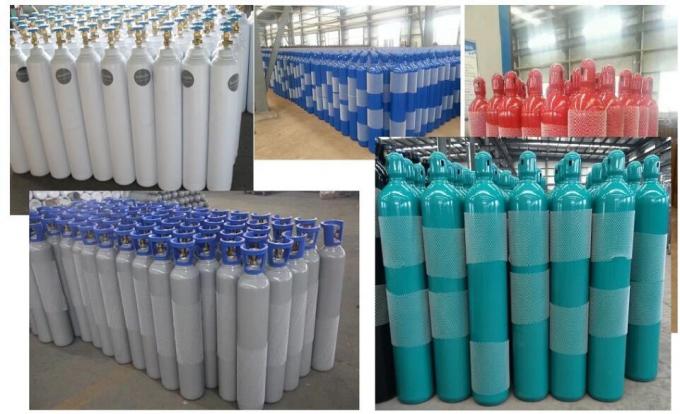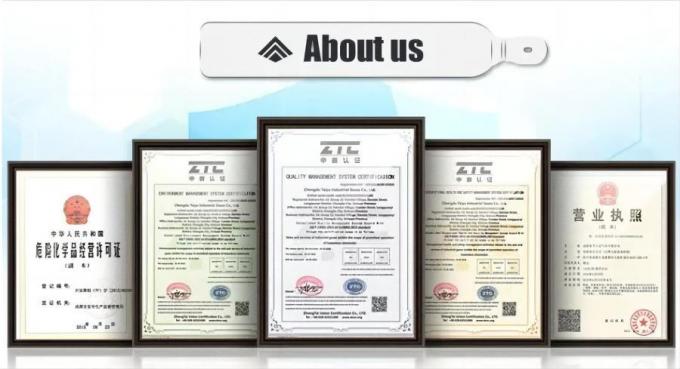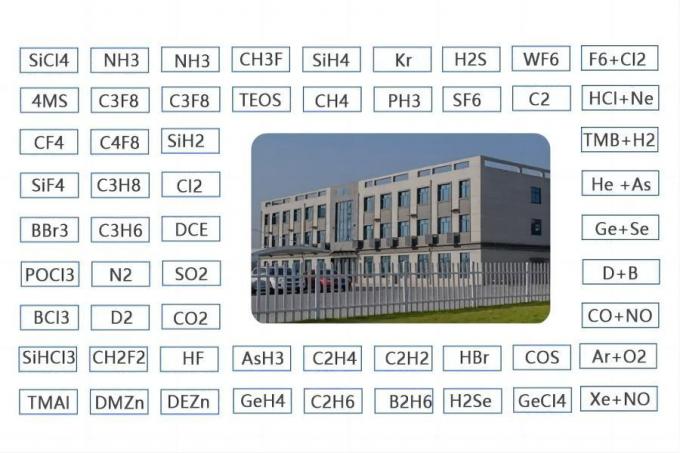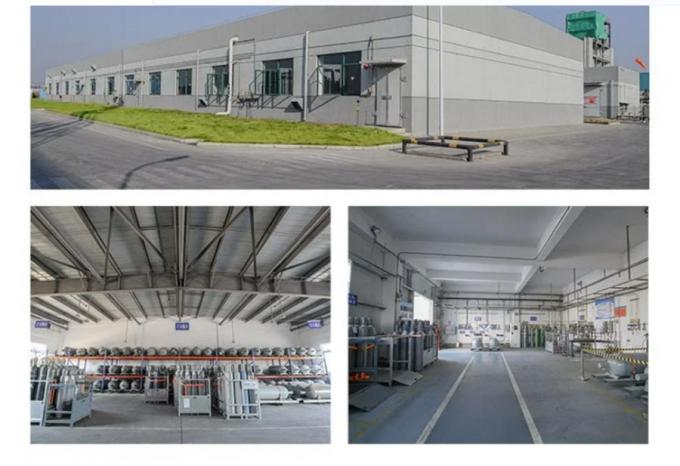


| MOQ: | 1kg |
| Price: | US $15/kg |
| Standard Packaging: | Cylinder/Tank |
| Delivery Period: | 15 days |
| Payment Method: | L/C, T/T |
| Supply Capacity: | 5000kg/month |
Argon (Ar) gas is a colorless, odorless, and non-reactive gas that belongs to the noble gas group in the periodic table. It is the third most abundant gas in the Earth's atmosphere, constituting about 0.93% of the atmosphere.
Here are some key points about argon gas:
Properties: Argon is a monatomic gas, meaning its atoms exist as single atoms rather than forming molecules. It is denser than air and is slightly soluble in water. Argon is chemically inert, meaning it does not readily react with other elements or compounds under normal conditions.
Industrial Applications: Argon has various industrial uses due to its unique properties. It is commonly used as a shielding gas in welding processes to protect the weld area from atmospheric gases, preventing oxidation and ensuring a high-quality weld. Argon is also used in the production of specialty glass, as a carrier gas in chromatography, and as a protective gas in the production of metals and semiconductors.
Lighting Applications: Argon is used in various types of lighting, such as fluorescent lights and plasma displays. When an electric current passes through argon gas, it emits a blue-violet glow. Argon is also used in some types of gas lasers, including argon ion lasers, which produce powerful beams of light in the visible and ultraviolet range.
Medical Applications: Argon gas has medical applications as well. It can be used in cryosurgery, a procedure that uses extreme cold to destroy abnormal tissue, such as warts or certain skin lesions. Argon gas is also used in some medical imaging techniques, such as magnetic resonance imaging (MRI), as a cooling agent for superconducting magnets.
Inert Atmosphere: Argon is often used as an inert atmosphere in laboratory settings and industrial processes. Its inertness makes it suitable for creating oxygen-free or moisture-free environments, protecting sensitive materials or reactions from unwanted chemical reactions with air or moisture.
Due to its non-toxic and non-reactive nature, argon gas is considered relatively safe to handle. However, as with any compressed gas, proper safety precautions should be followed, including storage in well-ventilated areas and using appropriate handling equipment.
Basic Info.
| Model NO. | Ar | Content | Content: 28tons |
| Industrial Grade | Industrial Grade | Tank Car | 26m³ |
| Purity | 100.00% | Transport Package | Sea Transportation |
| Specification | Tank Car: 26m3; Content: : 28tons | Trademark | CMC |
| Origin | suzhou | Production Capacity | 5000piece/Month |
| Specification | Tank Car:26m³ Content: 28tons | |||
| Application | 1. used as a protective gas for the production of high purity silicon and germanium crystals in the semiconductor industry; | |||
| 2.used as inert gas for system cleaning, shielding and pressurization; | ||||
| 3. Be applied in chemical vapor deposition, sputtering, annealing and other processes. | ||||
| 4. used as chromatographic carrier gas, and can also be used as a dilution gas of gas mixture in large-scale integrated circuits. | ||||
Detailed Photos





| MOQ: | 1kg |
| Price: | US $15/kg |
| Standard Packaging: | Cylinder/Tank |
| Delivery Period: | 15 days |
| Payment Method: | L/C, T/T |
| Supply Capacity: | 5000kg/month |
Argon (Ar) gas is a colorless, odorless, and non-reactive gas that belongs to the noble gas group in the periodic table. It is the third most abundant gas in the Earth's atmosphere, constituting about 0.93% of the atmosphere.
Here are some key points about argon gas:
Properties: Argon is a monatomic gas, meaning its atoms exist as single atoms rather than forming molecules. It is denser than air and is slightly soluble in water. Argon is chemically inert, meaning it does not readily react with other elements or compounds under normal conditions.
Industrial Applications: Argon has various industrial uses due to its unique properties. It is commonly used as a shielding gas in welding processes to protect the weld area from atmospheric gases, preventing oxidation and ensuring a high-quality weld. Argon is also used in the production of specialty glass, as a carrier gas in chromatography, and as a protective gas in the production of metals and semiconductors.
Lighting Applications: Argon is used in various types of lighting, such as fluorescent lights and plasma displays. When an electric current passes through argon gas, it emits a blue-violet glow. Argon is also used in some types of gas lasers, including argon ion lasers, which produce powerful beams of light in the visible and ultraviolet range.
Medical Applications: Argon gas has medical applications as well. It can be used in cryosurgery, a procedure that uses extreme cold to destroy abnormal tissue, such as warts or certain skin lesions. Argon gas is also used in some medical imaging techniques, such as magnetic resonance imaging (MRI), as a cooling agent for superconducting magnets.
Inert Atmosphere: Argon is often used as an inert atmosphere in laboratory settings and industrial processes. Its inertness makes it suitable for creating oxygen-free or moisture-free environments, protecting sensitive materials or reactions from unwanted chemical reactions with air or moisture.
Due to its non-toxic and non-reactive nature, argon gas is considered relatively safe to handle. However, as with any compressed gas, proper safety precautions should be followed, including storage in well-ventilated areas and using appropriate handling equipment.
Basic Info.
| Model NO. | Ar | Content | Content: 28tons |
| Industrial Grade | Industrial Grade | Tank Car | 26m³ |
| Purity | 100.00% | Transport Package | Sea Transportation |
| Specification | Tank Car: 26m3; Content: : 28tons | Trademark | CMC |
| Origin | suzhou | Production Capacity | 5000piece/Month |
| Specification | Tank Car:26m³ Content: 28tons | |||
| Application | 1. used as a protective gas for the production of high purity silicon and germanium crystals in the semiconductor industry; | |||
| 2.used as inert gas for system cleaning, shielding and pressurization; | ||||
| 3. Be applied in chemical vapor deposition, sputtering, annealing and other processes. | ||||
| 4. used as chromatographic carrier gas, and can also be used as a dilution gas of gas mixture in large-scale integrated circuits. | ||||
Detailed Photos



